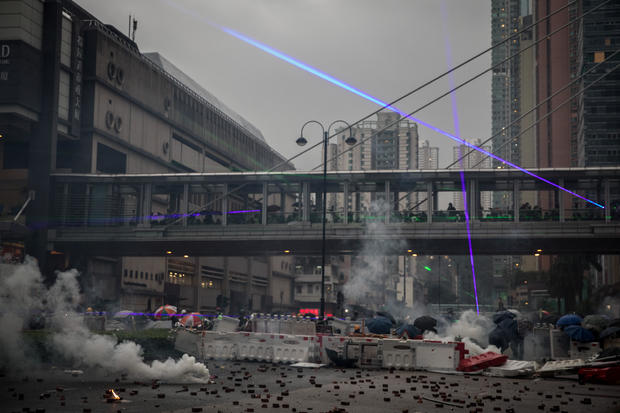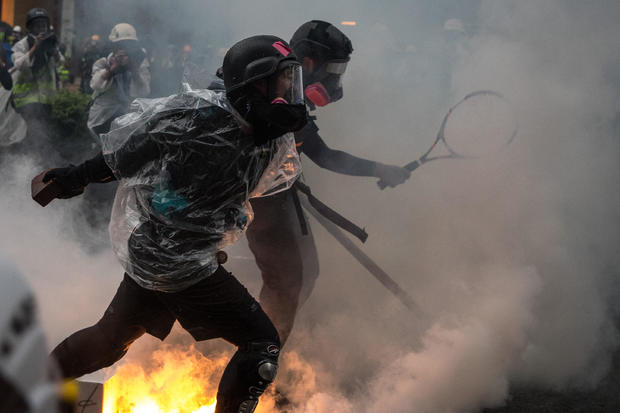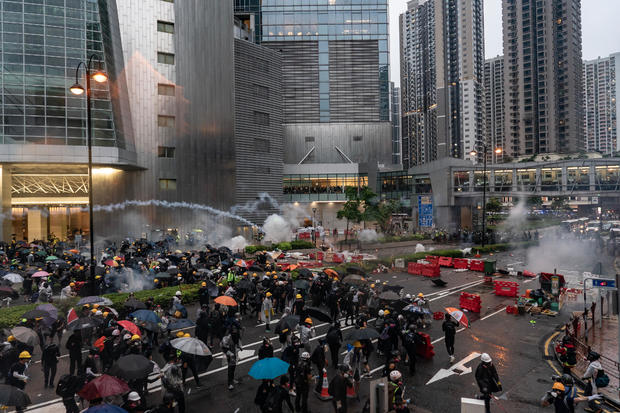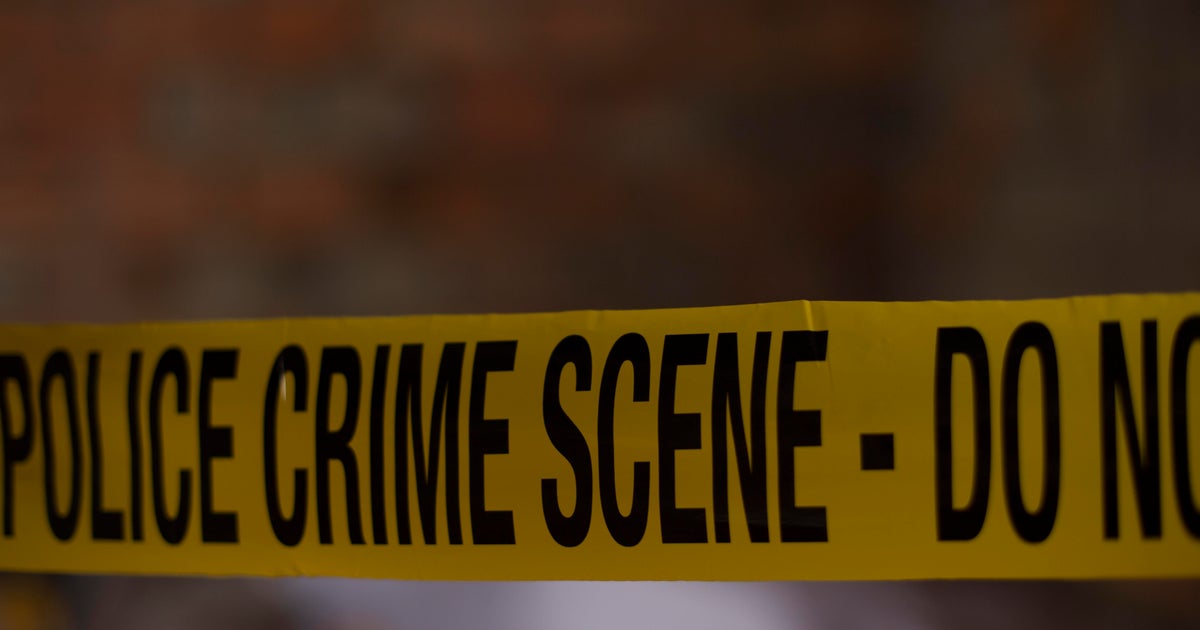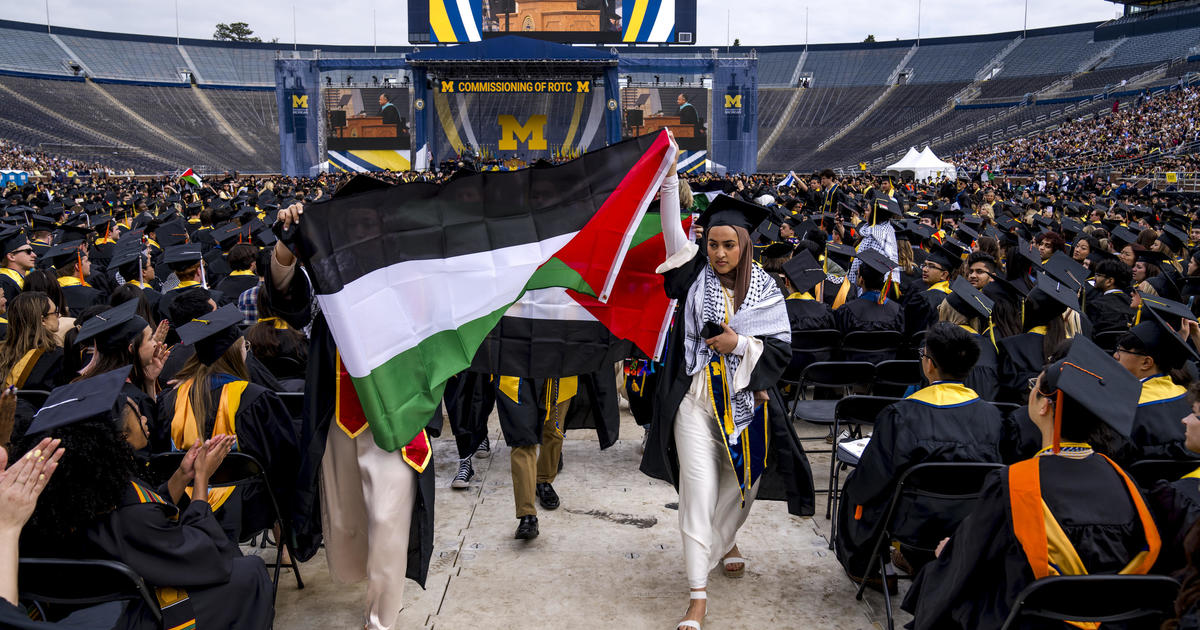Hong Kong officer fires gun as police use water canon trucks and make arrests during protests
Hong Kong police drew their guns and fired a warning shot Sunday night after protesters attacked officers with sticks and rods. Authorities brought out water cannon trucks for the first time, an escalation in the summerlong protests that have shaken the city's government and residents.
The day's main showdown took place on a major drag in the outlying Tsuen Wan district following a protest march that ended in a nearby park.
While a large crowd rallied in the park, a group of hard-line protesters took over a main street, strewing bamboo poles on the pavement and lining up orange and white traffic barriers and cones to obstruct police.
After hoisting warning flags, police used tear gas to try to disperse the crowd. Protesters responded by throwing bricks and gasoline bombs toward the police. The result was a surreal scene of small fires and scattered paving bricks on the street between the two sides, rising clouds of tear gas and green and blue laser lights pointed by the protesters at the police.
The protesters eventually decided to abandon their position. Two water cannon trucks and a phalanx of police vehicles with flashing lights joined riot police on foot as they advanced up the street. They met little resistance. Television footage showed a water cannon being fired once, but perhaps more as a test, as it didn't appear to reach the retreating protesters.
Officers pulled their guns after a group of remaining protesters chased them down a street with sticks and rods, calling them "gangsters." The officers held up their shields to defend themselves as they retreated. Police said that one officer fell to the ground and six drew their pistols after they were surrounded, with one firing the warning shot.
Some protesters said they're resorting to violence because the government has not responded to their peaceful demonstrations.
"The escalation you're seeing now is just a product of our government's indifference toward the people of Hong Kong," said Rory Wong, who was at the showdown after the march.
One neighborhood resident, Dong Wong, complained about the tear gas.
"I live on the 15th floor and I can even smell it at home," he said. "I have four dogs, sneezing, sneezing all day. ... The protesters didn't do anything, they just blocked the road to protect themselves."
Police said they arrested 36 people, including a 12-year-old, for offenses such as unlawful assembly, possession of an offensive weapon and assaulting police officers.
Earlier Sunday, tens of thousands of umbrella-carrying protesters marched in the rain. Many filled Tsuen Wan Park, the endpoint of the rally, chanting, "Fight for freedom, stand with Hong Kong," the South China Morning Post newspaper reported.
The march in Hong Kong's New Territories started near the Kwai Fong train station, which has become a focal point for protesters after police used tear gas there earlier this month. Police with riot gear could be seen moving into position along the march route.
Protesters have taken to the semiautonomous Chinese territory's streets for more than two months. Their demands include democratic elections and an investigation into police use of force to quell the protests.
A large group clashed with police Saturday after a march in the Kowloon Bay neighborhood, building barricades and setting fires in the streets. Police said they arrested 29 people for various offenses, including unlawful assembly, possession of offensive weapons and assaulting police officers.
In a statement obtained by CBS News, authorities said 15 police officers were injured and sent to the hospital. Hong Kong police condemned the clashes, saying they "overstepped the bottom line of a civilized society."
"Police appeal to members of the public to make a clean break with violent protestors and stay away from areas with violence," the statement read.
The clashes, while not as prolonged or violent as some earlier ones, ended a brief lull in the violence. The protests began in early June and had turned largely peaceful the previous weekend, after weeks of escalating violence.
In nearby Macao, another Chinese territory, a pro-Beijing committee chose a businessman as the gambling hub's next leader with little of the controversy surrounding the government in Hong Kong.
Ho Iat-seng, running unopposed, will succeed current leader Chui Sai-on in December. Asked about the protests in Hong Kong, the 62-year-old Ho said they would end eventually, like a major typhoon.
Protesters in Hong Kong have demanded that the city's leader, Carrie Lam, also chosen by a pro-Beijing committee, step down, though that demand has evolved into a broader call for fully democratic elections.
Containing the spread of misinformation
Last week, YouTube shut down more than 200 channels spreading disinformation related to the protests. Google's announcement Thursday followed the suspension of hundreds of thousands of Twitter and Facebook accounts tied to the Chinese government.
YouTube said it disabled 210 channels that had posted videos about the protests. According to the tech giant, the channels were "coordinated influence operations" working to undermine the ongoing pro-democracy protests.
Google said it removed the channels after discovering their motives. Shane Huntley, of Google Security, said the "discovery was consistent with recent observations and actions related to China announced by Facebook and Twitter."
According to Huntley, the channels used VPNs — virtual private networks — and other means to hide the origins of their accounts. He didn't say how many videos had circulated or how popular they were before they were taken down.
Sophie Lewis contributed to this report.
